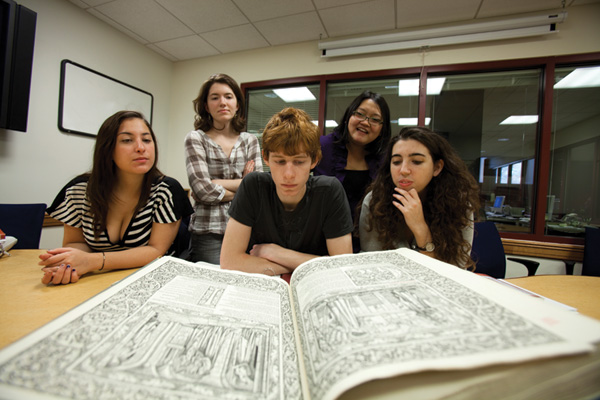Found in Translation
Middle English literature, written roughly between 1100 and 1350, is important because it contributes to a historic understanding of how English became an important literary language during the Middle Ages. But for those who study or research the medieval period, the number-one frustration is a lack of access to the texts. Institutions usually keep the fragile documents under lock and key, and even when digital copies are available, the lack of background information makes the narratives’ language, intricate web of characters, and events difficult to follow.

Assistant Professor of English Dorothy Kim is helping to change that. Along with codirector Dr. Scott Kleinman of California State University, Northridge, Kim was awarded a multiyear grant from the National Endowment for the Humanities to prepare digital editions of several inaccessible manuscripts from 13th-century Britain. She works with students—most recently Vassar Ford Scholars—to annotate (or “tag”) digital electronic manuscripts with transcriptions and information on names and places in order to show how the language has developed over time, as well as the ways in which the texts stand in relation to each other.
One goal is to make the information searchable and easily adaptable for use in a variety of digital formats. The digital format will allow scholars and students to create visualizations that will help reframe these texts. Users might tag people in a given poem to illustrate social networks or to map out genealogical relationships, for example. These kinds of analyses become alternate ways to read medieval texts, she says.
As for her students, Kim says: “Learning how to encode a text is an intense way to do close-reading. It teaches them what the effects of editorial decisions can be if they choose to encode a line of poetry one way or if they choose not to tag an item as a place. These decisions create waves further on as other projects and other people use their data.”
“What we hope in the end is that these texts, often little studied and known, will become visible and integral in explaining how we got from Old English to Chaucer’s Middle English,” she says.
